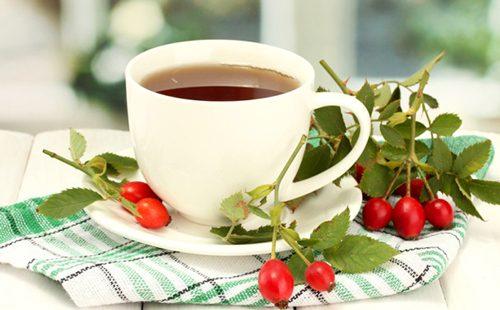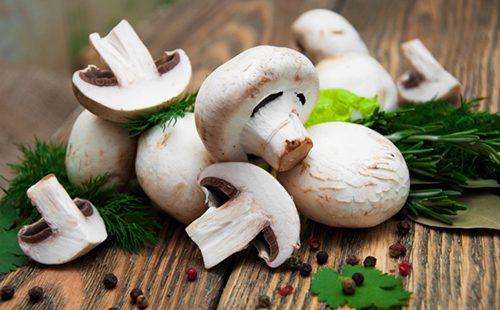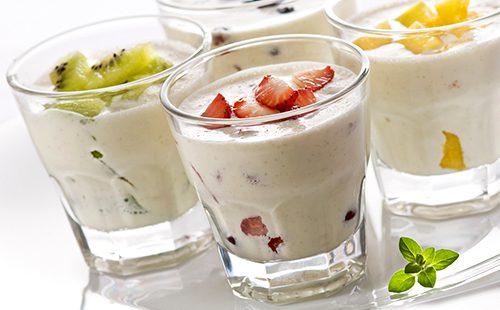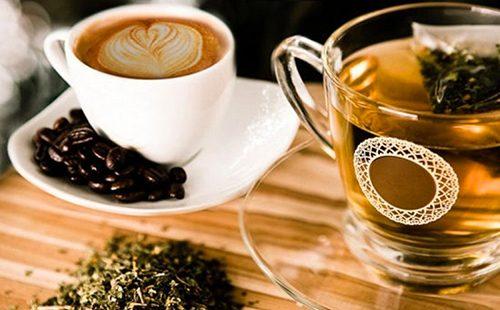The content of the article
In the Middle Ages, gout was called the “disease of kings and aristocrats,” they dedicated not only scientific works to it, but also sang it in lyrical works. The reason for this is the prevalence of the disease among the "best representatives" of mankind. Traditionally, the disease accompanied those who could afford a lot and eat deliciously, drink a lot of alcohol, that is, rulers, nobles, officials, scientists and artists close to the court.
Features of the disease
What danger awaits a patient with a gout. Gout is manifested by increased formation of uric acid in the body and the deposition of its crystals (sodium monourates) in the tissues. It can be both in women and in men. In the vast majority of cases, they settle in the joints, causing inflammation, swelling and pain.
Symptoms
Symptoms of gout are characteristic, but, unfortunately, during a period of severe symptoms, the disease becomes irreversible. At the first stage, it develops asymptomatically, imperceptibly. You can only determine the likelihood of development by a blood test, in which an elevated level of uric acid should be observed. But even in this case, talking about the unambiguous presence of the disease is incorrect, since an increase in the level of uric acid can accompany other diseases, including urolithiasis, the inflammatory process, and tumor formations.
Gout manifests itself only at the moment when a sufficiently large volume of crystals of sodium monourate is accumulated in the joints. This causes acute gouty arthritis, which can be dealt with only through intensive care. In the period of exacerbation, the patient is shown inpatient treatment, while when the intercritical period is reached, a corrective diet for gout is recommended in order to normalize the level of uric acid in the body.

Causes of occurrence
There is an opinion that the tendency to gout is determined genetically. However, diet and lifestyle influence the development of the disease to the greatest extent. Modern scientific studies have confirmed the direct relationship of everyday diet with the frequency of gout development and the intensity of its manifestation.
The main causes of the disease are considered the main "scourges" of the twentieth century.
- Obesity. In recent years, the incidence of gout has increased exponentially. As a rule, residents of developed, prosperous countries suffer from the disease. According to research, the number of cases over the past fifteen years has grown 3-8 times, along with a clear tendency to obesity. Excessive weight gain contributes to the use of large quantities of meat, seafood, fatty foods and fast food, beer. In combination with a sedentary lifestyle, this leads to resistance (cell immunity) to insulin and arterial hypertension. These conditions provoke the production of uric acid in the body.According to several studies conducted by American and Chinese scientists in 2002-2005, obesity and overweight significantly increase the risk of developing gout.
- Alcohol intake. The occurrence of the disease was associated with frequent alcohol consumption in the Middle Ages. In modern history, this relationship has been confirmed empirically. In 2004, the results of a study on the effect of alcohol on the development of gout in men were published. Three American experts H. Choi, K. Atkinson, and E. Karlson collected data from over fifty thousand Americans over the course of twelve years. During this time, seven hundred and thirty subjects who regularly consumed alcohol developed gout. Scientists noted the direct relationship of the disease not with all alcoholic drinks, but with beer and strong alcohol, such as port and similar drinks. In this case, the effect of drinking wine on the incidence of gout has not been identified.
- Lifestyle. A modern approach to gout allows us to interpret this disease as characteristic of people living in economically developed regions. This conclusion was made by Chinese experts Z. Miao and C. Li as a result of a study conducted in 2008. Five thousand people from urban and rural areas took part in it. Scientists noted that the incidence of the disease in cities is 13 times higher than in villages. The reason for this is the level of economic development of the regions and the accessibility of the "benefits of civilization" for a particular person.
In each case, there is a direct effect of the diet on the occurrence of the disease. Therefore, proper nutrition for gout is an urgent issue for its manifestations, after attenuation of inflammatory phenomena and for the prevention of relapse of acute arthritis. When gout should be eaten properly.
Rules for making a diet for gout
A diet with gout during an exacerbation and remission should exclude foods rich in purines. In accordance with current therapeutic recommendations, reducing the number of purines in the diet reduces the production of uric acid.
What not
The largest number of purines is characteristic of protein products. Therefore, the list of products that need to be limited looks impressive.
| Types of dishes | Products |
|---|---|
| Legumes | Peas, Beans, Lentils, Beans, Corn |
| A fish | Sprats, sardines, sprats, cod, pike perch, pike |
| Meat | Pork, veal, beef, lamb, goose, chicken |
| Offal | Kidneys, Liver, Brains, Lungs |
| Broths and sauces | Meat, mushroom, fish, jelly |
| Mushrooms | White champignons |
| Vegetables | Sorrel, spinach, radish, asparagus, cauliflower |
| Cereals | Oat polished rice |
| Other products | Yeast products, sausages |
| The drinks | High caffeine, including strong tea and coffee |

What can
Nutrition for gout during an exacerbation allows the use of the following products.
| Types of dishes | Products |
|---|---|
| Bread, flour products | From wheat and rye flour |
| A fish | Non-greasy, 2-3 times a week |
| Meat | Non-greasy, 2-3 times a week |
| Egg | One per day, cooked at random |
| Milk products | Milk, lactic drinks, sour cream, cottage cheese, cheese |
| Cereals, pasta | With no exceptions |
| Vegetables | Cabbage, potatoes, cucumbers, carrots, onions, tomatoes, watermelon |
| Soups | Dairy, vegetarian, borsch, cabbage soup, vegetables with cereals, cold (beetroot, okroshka) |
| Fruits, Berries, Nuts | Strawberries, apples, apricots, grapes, plums, pears, peaches, cherries, oranges, hazelnuts and walnuts |
| Dessert | Kissel, milk cream, sugar, honey, jam, marmalade, candy, meringues |
| Sauces, spices | Milk, sour cream, tomato, vegetable broth, vanillin, cinnamon, citric acid |
| The drinks | Weak tea and coffee with milk, rosehip broth, fruit and berry juices |
What is possible, what can not be in the diet with gout of the legs diet number 6. It is designed to correct the diet in conditions with increased formation of stones, uric acid crystals in the body and helps to normalize purine metabolism.
In accordance with the recommendations of treatment table No. 6, food with a total energy value of up to 2900 Kcal per day is allowed, provided that there is no excess weight. During the day, you need to plan four to five meals with a plentiful drink during breaks.

Additional recommendations
“The diet for gout of the legs provides a significant reduction in purine-containing foods in the diet,” comments dietitian Lyudmila Denisenko. “At the same time, it is aimed at correcting concomitant conditions, including stimulation of uric acid excretion by the kidneys, normalization of the nervous and cardiovascular systems.” There are a number of products prohibited for consumption.
Therefore, it is important to follow several recommendations for the formation of a daily diet.
- Lose weight. Overweight aggravates the course of the disease, provokes impaired renal function, eliminates the possibility of normal excretion of uric acid. If you are overweight, reduce the energy value of the diet.
- Eat the right fats. When reducing the level of animal fats in the diet, include vegetable, in particular, olive, sunflower, corn oil.
- Take a multivitamin. It is especially important to use a sufficient amount of vitamins C, PP and B2 to correct the condition.
- Drink a lot. In the absence of edema and normal kidney function, abundant fluid intake is recommended. It is important for you to drink at least two and a half liters of fluids per day, including plain water with lemon juice, as well as fruit and berry juices, herbal teas, rosehip brothmilk.
- Drink Alkaline Mineral Water. It alkalizes urine, which makes its composition active against uric acid. An alkaline urine reaction helps dissolve dangerous compounds and reduces the risk of disease progression.
- Eat urine alkaline foods. These include almost all fresh fruits and berries. Their value in the diet also lies in the high content of potassium, which has a diuretic effect.
- Reduce Salt. Salt itself contributes to the deposition of uric acid crystals in the joints. Its increased content in food reduces the intensity of urine excretion and causes swelling, which eliminates the diuretic effect necessary for exacerbations. Reduce salt intake in dishes to a minimum.
- Exclude alcohol. Alcoholic beverages disrupt the kidneys, which eliminates the possibility of excretion of uric acid from the body. Even their periodic intake can provoke an attack and exacerbation.
- Arrange fasting days. Eat the right food. Once a week, arrange the body to unload from plentiful food. What is good for you is one-day mono-diets on foods that are poor in purines. In summer, arrange fasting days on watermelons that perfectly remove uric acid and salts from the body. In spring and autumn, use cucumber and apple mono-diets. In winter, potato is suitable. All of these foods are rich in potassium and fiber valuable to you.

Menu
We recommend a weekly diet menu for gout on legs with a low content of protein products and an abundance of fluids that stimulate uric acid excretion.
| Day of the week | Eating | Food & Dishes |
|---|---|---|
| Monday | On an empty stomach | Rosehip broth |
| Breakfast | Tea with milk; cucumber salad with sour cream |
|
| Lunch | Fruit juice | |
| Dinner | Rice soup with potatoes on a vegetable broth; cabbage cutlets; dried fruits compote |
|
| Lunch | Rosehip broth | |
| Dinner | Omelette; carrot zrazy with prunes; tea with lemon |
|
| Before bedtime | Kefir | |
| Tuesday | On an empty stomach | Rosehip broth |
| Breakfast | Tea with milk; fresh cabbage salad with sour cream |
|
| Lunch | Tomato juice | |
| Dinner | Vegetarian borsch; boiled meat in white sauce |
|
| Lunch | Rosehip broth | |
| Dinner | Buckwheat porridge with milk; stuffed cabbage stuffed with vegetables with rice |
|
| Before bedtime | Fruit juice | |
| Wednesday | On an empty stomach | Rosehip broth |
| Breakfast | Tea with milk; prunes baked with cottage cheese |
|
| Lunch | Fruit juice | |
| Dinner | Beetroot cold; vegetable stew |
|
| Lunch | Rosehip broth | |
| Dinner | Milk oatmeal porridge; jelly fruit |
|
| Before bedtime | Fresh apple compote | |
| Thursday | On an empty stomach | Rosehip broth |
| Breakfast | Tea with milk; beetroot salad in vegetable oil |
|
| Lunch | Tomato juice | |
| Dinner | Vegetarian pearl barley soup with vegetables; fried cabbage schnitzel in vegetable oil |
|
| Lunch | Grape Juice | |
| Dinner | Carrot cutlets with sour cream; jelly fruit |
|
| Before bedtime | Watermelon or yogurt | |
| Friday | On an empty stomach | Rosehip broth |
| Breakfast | Tea with milk; soft-boiled egg; carrots stewed with vegetable oil |
|
| Lunch | Tomato juice | |
| Dinner | Beetroot cold; vegetable stew |
|
| Lunch | Rosehip broth | |
| Dinner | Milk oatmeal porridge; jelly fruit |
|
| Before bedtime | Fresh apple compote | |
| Saturday | On an empty stomach | Rosehip broth |
| Breakfast | Tea with milk; cucumber salad |
|
| Lunch | Fruit juice | |
| Dinner | Rice soup with potatoes on a vegetable broth; fried cabbage cutlets |
|
| Lunch | Rosehip broth | |
| Dinner | Omelette; stewed carrots; tea with lemon |
|
| Before bedtime | Dried fruits compote | |
| Sunday | On an empty stomach | Rosehip broth |
| Breakfast | Tea with milk; fresh cabbage salad with sour cream |
|
| Lunch | Tomato juice | |
| Dinner | Vegetarian borsch; boiled meat in white sauce |
|
| Lunch | Rosehip broth | |
| Dinner | Buckwheat porridge with milk; stewed cabbage with butter or boiled |
|
| Before bedtime | Fruit juice |
Use the daily menu for the correct diet for gout and high uric acid. It presents simple recipes that you can change as you wish, using a variety of vegetables, cereals, healthy drinks.
Modern Gout Therapy
Recently, significant changes have occurred in the treatment of gout. They are based on data from studies conducted since 2002 in different countries of the world. In 2008, the scientific publication "Modern Rheumatology" published a scientific article on the importance of diet and the use of biologically active food additives in the treatment of this disease.
The authors of the article, A. I. Ilyin and V. G. Barskov, researchers at the Institute of Rheumatology, Russian Academy of Medical Sciences, note the close relationship between gout and a number of other diseases, including diabetes mellitus, diseases of the cardiovascular system.
The latest recommendations for patients with gout are based on three basic principles. How to treat patients:
- Weight loss. Normalizes metabolic processes in the body.
- Moderate carbohydrate restriction and relative increase in protein volume. Observations of experts show that the optimal calorie intake for gout is 1600 Kcal per day. At the same time, a sufficient protein content reduces the frequency of gouty attacks.
- Increase Unsaturated Fat. The use of monounsaturated fats contained in vegetable oils helps to increase the sensitivity of cells to insulin, reduces the level of glucose in the blood, thereby eliminating the risk of increased formation of uric acid associated with it.
Also, research results refute data previously considered indisputable. This allows you to adjust the diet for gout, increasing the number of healthy and healthy foods in the diet.

Purine-rich plant foods
The main limitation of the diet concerns the exclusion from the diet of foods saturated with purines. These are all types of meat, fish and poultry, as well as mushrooms, legumes, some types of vegetables.
However, recent studies show differences between the bioavailability of purines from protein and plant products. The former, indeed, are absorbed almost completely. But mushrooms, cauliflower, corn, soybeans, spinach, lentils and asparagus do not cause an increase in uric acid levels in the body. You can use them.
Protein
It was previously believed that an increased level of protein in the diet provokes an increase in uric acid levels and a concomitant exacerbation of gout. It has now been found that a high-protein diet, in contrast, inhibits the production of uric acid.
However, recommendations for consuming large amounts of protein for people suffering from this disease are not possible. Due to metabolic disturbances in the body, the level of uric acid, indeed, can vary. But this suggests that there is no point in being afraid to consume protein foods. They are not at all as dangerous to the body as previously thought.

Fats
The introduction of unsaturated fats into the diet is of exceptional value for the treatment of gout. But the level of animal fats in dairy products must be strictly controlled. There is evidence that regular use of yogurt and milk with a reduced level of fat reduces the risk of gout, normalizes the patient's condition.
Milk products
All kinds of dairy products are allowed in the diet. Modern research confirms their benefits. Moreover, it has been established that casein and lactalbumin milk proteins have a therapeutic effect on the body. They increase the intensity of excretion of uric acid with urine.
Alcohol
Indisputable data on the effect of alcohol on the development of gout. Studies have confirmed the relationship between the amount of alcohol regularly drunk by the patient and the incidence of the disease.
So when drinking alcohol in the amount of 15 grams per day, the risk of the disease increases by 1.5 times. And an increase in the norm of alcohol to fifty grams per day increases the risk of the disease by 2.5 times.
In 2004, specialists from the American Institute of Health and Nutrition conducted a study on the effect of various types of alcohol on the body with diagnosed gout and the risk of its occurrence. It has been found that drinking beer and liquors greatly increases the risk of illness. While the use of wine, on the contrary, reduces the level of uric acid in the body.

The drinks
Recommendations regarding the use of a large volume of liquid (up to two and a half liters per day) remained unchanged. But scientists propose to change the attitude to coffee and tea.
“Coffee has a moderate diuretic effect,” comments A. Ilyina, a specialist at the Institute of Rheumatology of the Russian Academy of Medical Sciences. - This effect increases as coffee consumption increases. More than five cups per day cause significant diuretic effects. And long-term and regular drink consumption reduces the risk of developing the disease. ”
Coffee and tea, rich in antioxidants and polyphenols, also have anti-inflammatory effects, increase the sensitivity of cells to insulin, and reduce the risk of heart attack. Do not neglect these tonic drinks.
But the use of sugary drinks with fructose must be limited or completely excluded from the diet. According to studies published by American experts in 2007, the use of such drinks greatly increases the risk of a disease in men.
Vitamins and minerals
Some trace elements affect the composition of urine, causing an increased alkali content in it. At the same time, monourates are effectively dissolved in urine, which ensures their productive excretion. Valuable for the diet for gout are sodium citrate and potassium citrate.
In 2005, a study was published on the effect of vitamin C on uric acid levels. One hundred eighty-four patients took part in it, some of which received ascorbic acid at a dosage of 500 mg daily, and the other part received placebo. According to the results of the study, a significant decrease in the level of uric acid in those receiving vitamin C within two months was found.
Therapy of gout is an urgent issue of our time, since every year the disease affects an increasing number of people. The modern approach to its treatment is different from what was used in the last century. When correcting lifestyle and normalizing weight, a special diet for gout is recommended. It should contain a limited amount of carbohydrates with a sufficient level of protein products and unsaturated fats.
Pay attention to the latest research when compiling your own diet. They eliminate the need for a strict, unattractive and extremely narrow system of medical nutrition, allowing you to include more protein and vegetable products in the diet.

